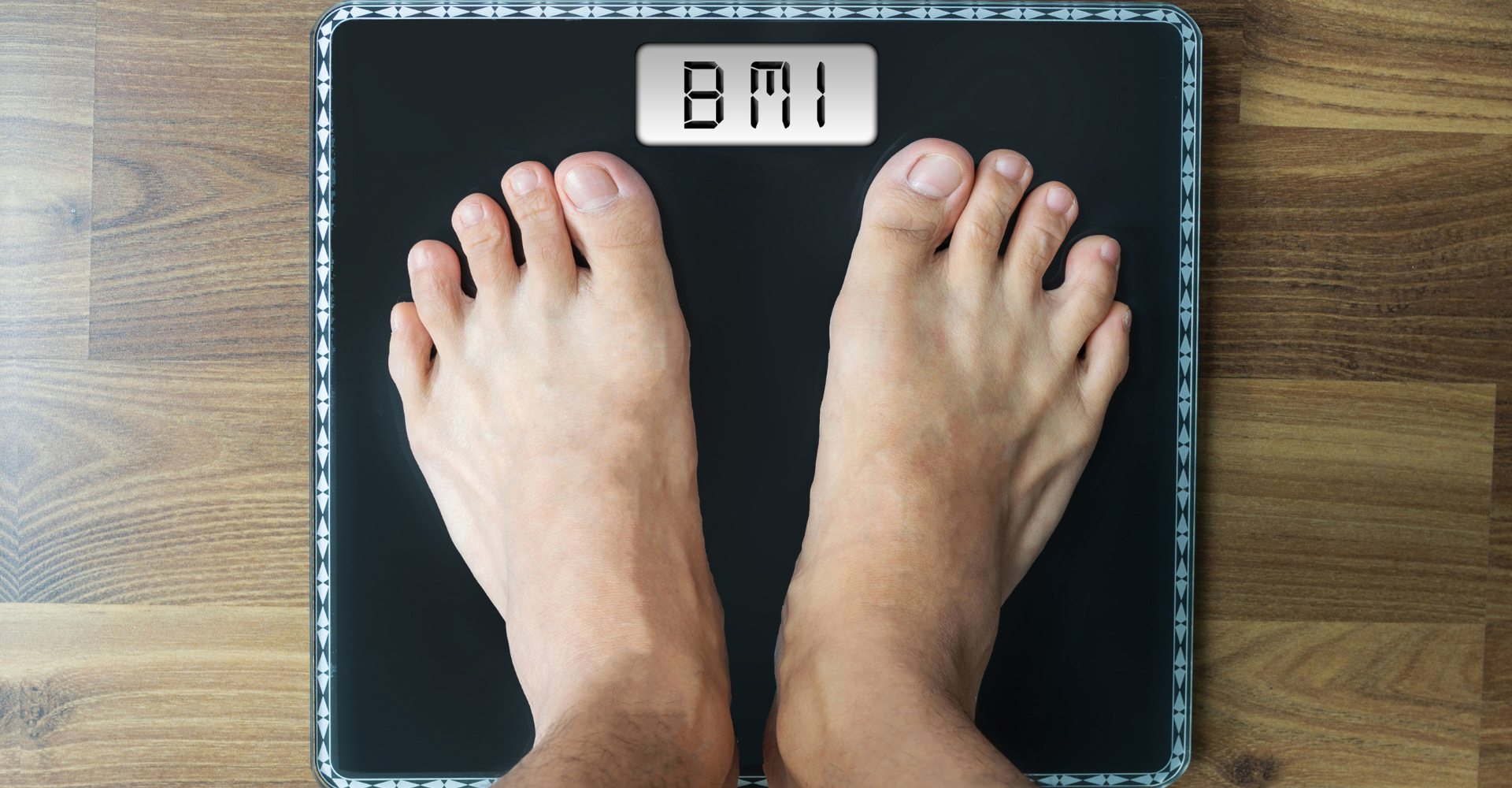Contrary to public opinion, Body mass index (BMI) was never meant to be used as a measure of individual health. It was meant to be used as an indicator for risk of developing certain weight related diseases.
But it turns out that this is an indicator only for a subset of the population, especially when you consider that the cut off markers associated with BMI and weight classes should not apply equally across the spectrum for different weight classes.
It is simply inappropriate to think otherwise. The BMI metrics are only accurate for the average white male, for whom it was designed in the mid-1800’s by Belgian statistician Adolpe Quetelet.
Not only is it an inaccurate proxy measure of health for different races, but for different genders as well.

It’s easy to calculate your BMI – simply divide your weight (kg) by your height (m) and multiply by two. You can see that the equation is somewhat simplistic and doesn’t take many factors into account.
I spoke with Dr. Sean Wharton, the medical director of the Wharton Medical Clinic, a community based internal medicine and weight management clinic in Toronto.
Wharton said the cut off number for entering the overweight category at 25 is too low for many women. It should be higher, at 27 or 28 for white women and 32 for black women.
Determining an assessment of one’s health based on BMI alone can be discouraging. “There are emotions connected to [BMI]. They deserve compassion,” Wharton said.
I remember the scale at my family home which would give me indicators for both my weight and my BMI.
For years I would dread stepping on the scale and seeing the scale flash a BMI reading which suggested I was overweight. However, based on the weight measurement alone, I was well within the “healthy” range, according to my weight in pounds.
Limitations of BMI: Weight
There is no differentiation between fat mass and muscle mass in BMI; a muscular person with very little body fat may still be classified as overweight or obese.
While the calculation is most accurate for the average White Male, very muscular white men will likely face inaccurate readings too.
It also doesn’t take into account different body shapes and sizes. The health risks change depending on where you store fat.
For example, if you have long legs and a short torso or vice versa, it can affect the results you end up with.
It also doesn’t account for bone denisty. If you have severe osteoporosis and therefore thin bones, you’ll end up with a lower BMI than someone with more bone mass.
Additionally, it only considers height and weight. There’s no mention of family history of diseases, metabolic differences, or current health problems you may be managing.
Limitations of BMI: Race
Adolpe Quetelet, the creator of the BMI measurement used only himself, a white male, as his reference point for weight classes, which was then used as a reference point for the entire population.
So while the scale is useful for white men, it simply doesn’t translate to other populations. Japanese men and women, for example, typically need a lower scale, as they tend to carry less fat around their midsections.
Fat placement is an important factor in considering health risks. Carrying fat around your thighs rather than your waist can up your BMI, though you will not be any more predisposed to the same health risks that are supposedly correlated to a high BMI.
It’s the central fat, according to Wharton, that is known to be dangerous to health. But BMI has no idea where you store fat. It only knows your weight.
I’ve talked a lot about the negatives of BMI, but “it’s mathematics,” Wharton said, “it’s not to be demonized.”
Instead, we need to understand that “the cutoff points that were made in the 1960s did not take into account different ethnic groups,” he continued.
“The challenge is a continual concept of systematic discrimination, just ignoring everybody else.” Wharton suggests that we need to continue developing more inclusive measures and acting with compassion.
Can It Still be Useful?
The best way to use BMI data is to learn information about a population, not individuals. There are better measures of individual health, such as blood pressure and blood sugar levels, although Wharton cautions that at-home readings may be inaccurate.
We don’t have to throw the BMI scale out altogether. “I believe we could do research that would give us better … cut offs for different groups [of people],” Wharton said.
With the right scale, BMI can be a helpful indicator of having a higher risk of developing the following:
Low BMI
- Osteoporosis
- Undernutrition
- Eating disorders
High BMI
- Diabetes
- Heart disease
- High blood pressure
- Gallbladder disease
- Some forms of cancer
Options Other Than BMI
Most accurate measurements are still a challenge when it comes to self-assessment. They require highly technical and finicky assessment devices operated by trained medical staff.
The World Health Organization suggests that there is one method you can try at home for an indication of risk of disease and they suggest it is more accurate than BMI or skinfold testing.
It’s a hip to waist measurement. However, they caution that this should not be used as a standalone measurement of health. As well, it won’t be entirely accurate since it generalizes health according to body type.
Wharton looks forward to greater overall accuracy moving forward, and recommends the development of more inclusive measurement scales in consultation with groups like Obesity Matters, policy makers, advocacy groups, and universities.
It’s hard to feel good in your skin when society is adamantly telling you you’re overweight.
I recommend that you watch Dr. Wharton’s lecture with Obesity Canada to learn more about the history of BMI and embracing beauty of all sizes.
The information provided on TheHealthInsider.ca is for educational purposes only and does not substitute for professional medical advice. TheHealthInsider.ca advises consulting a medical professional or healthcare provider when seeking medical advice, diagnoses, or treatment.










